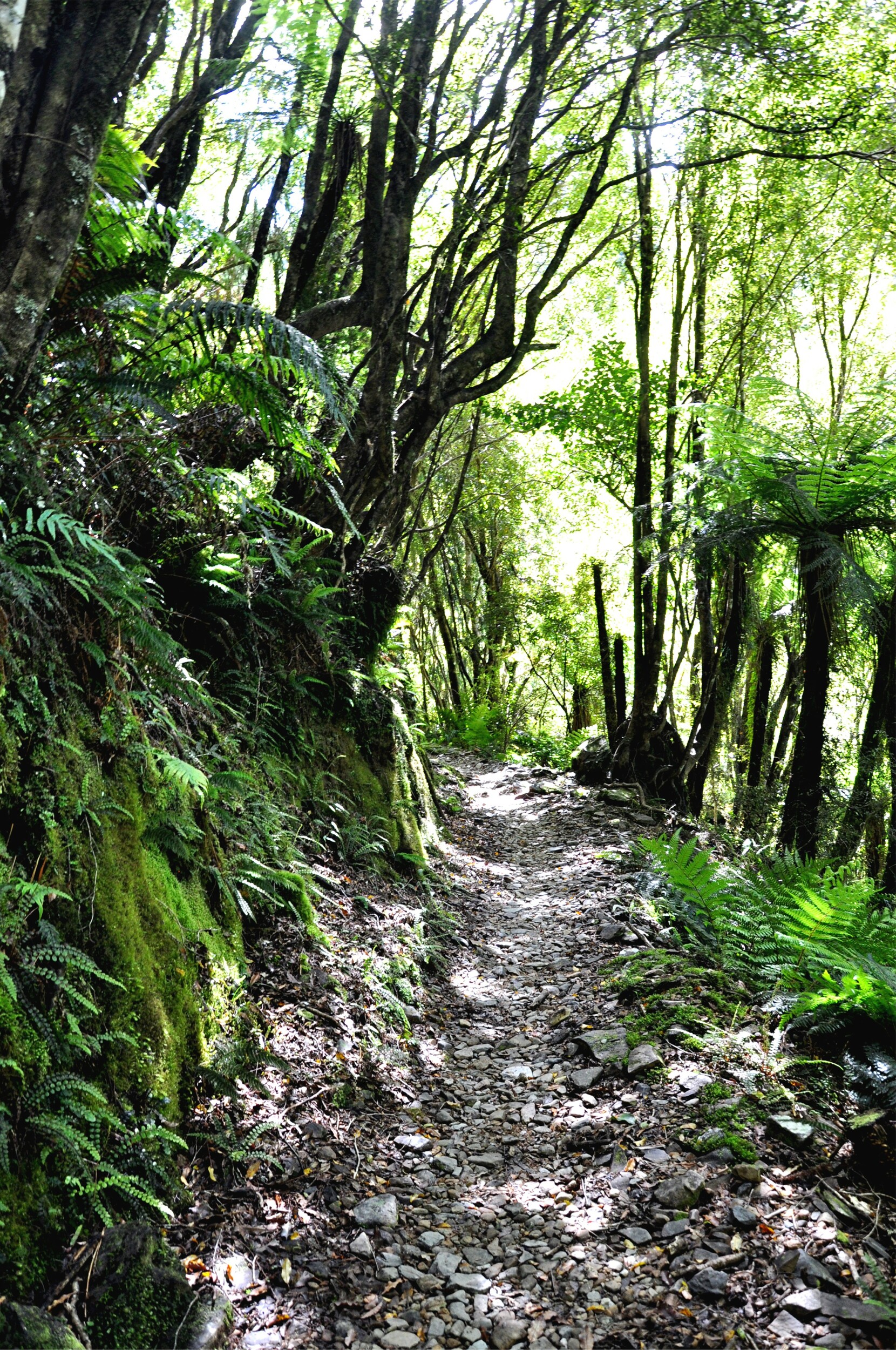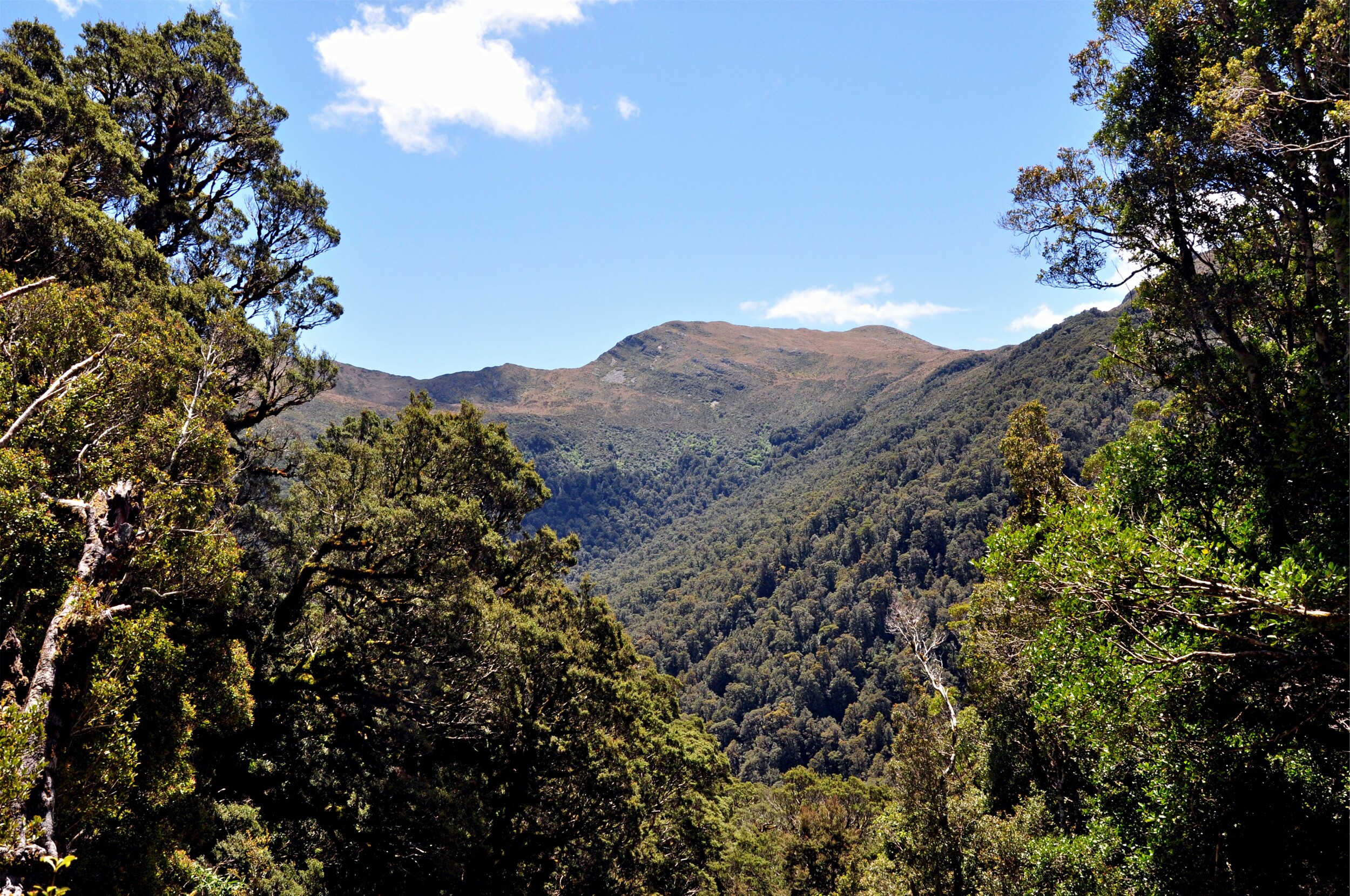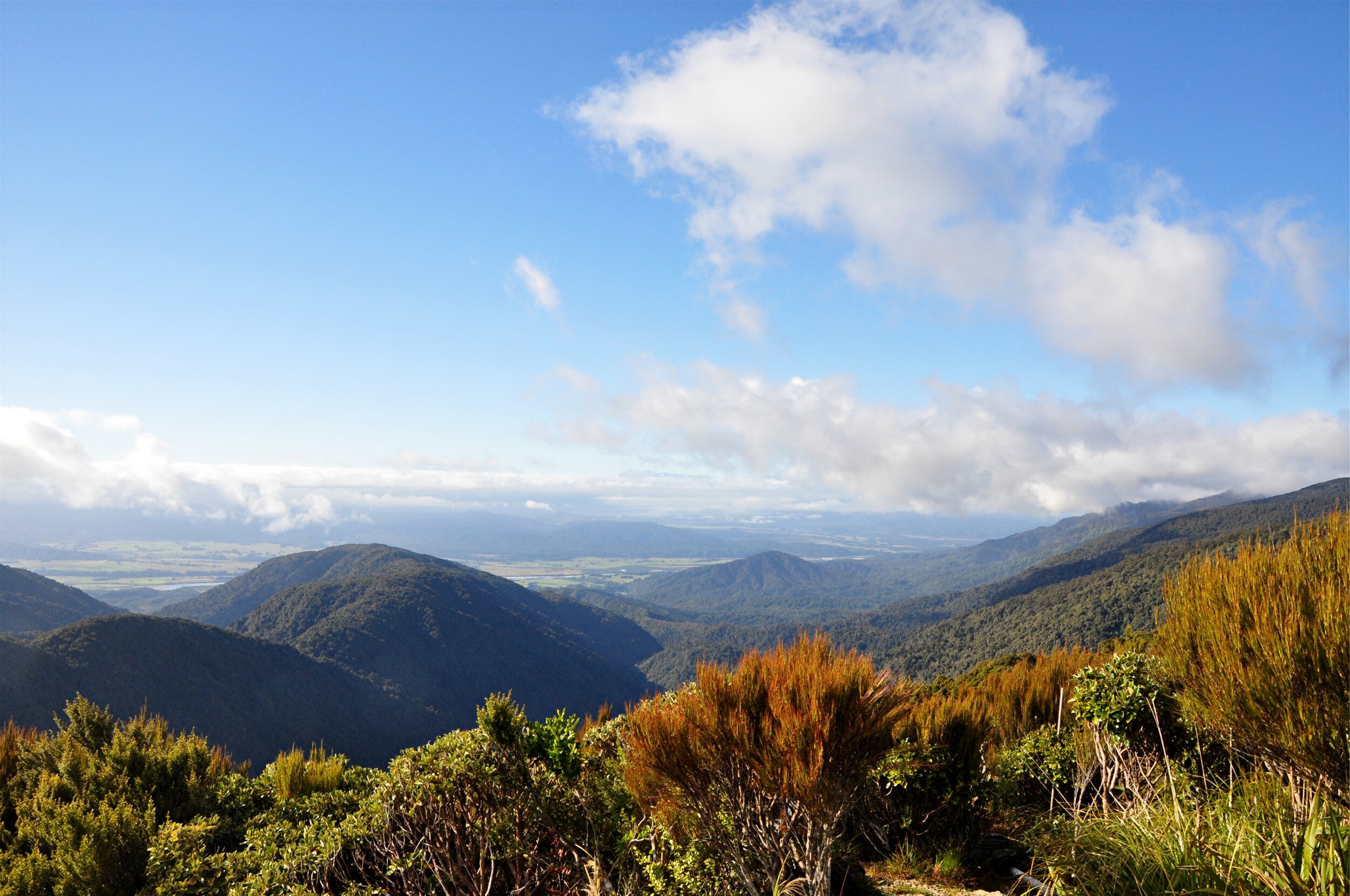The final part of our Christmas trip was the newest Great Walk on the South Island, the Paparoa Track. We had reservations to walk this track last year, but my broken ankle and a late spring storm that washed out sections of the track meant that we had to postpone our plans to walk this new track.
We left our cabin in Punakaiki and drove down the coast towards Greymouth where we stopped for breakfast. After filling up with some hearty food and some strong coffee we continued on to the trailhead. The track starts just outside the town of Blackball in the hills behind Greymouth. Blackball is a quirky old mining settlement, perhaps best known for it’s hotel called ‘The Formerly Blackball Hilton’, a name it was forced to adopt after receiving objections from the international hotel chain of the same name. Having seen the establishment, housed in the historic building, I don’t think there was ever likely to have been much confusion!

The first section of the track follows the historic Croesus Track that was constructed between 1881 and 1899 to allow better access to the mines in the upper Blackball Creek area.

The well-formed track allowed us to climb gradually up through the forest, following Blackball Creek. After a while we came to a fork in the track, and we were happy to leave our heavy packs by the side of the trail and take the path towards the Garden Gully area.

The smaller track wove through the dense forest, crossing a number of rivers and swampy areas. After a picking our way carefully over the rocks to cross some of the smaller streams, we came to a much larger wire bridge.

Although wire bridges are by no means uncommon in the New Zealand backcountry, we feel that this one deserves a special mention, not for the bridge itself, but for the unusual access. In order to reach the main span of the bridge, you needed to walk up a very steeply pitched wire walkway, not an easy feat with wet, muddy shoes and nothing really under you to keep the structure rigid. Luckily, without packs and with relatively fresh legs after a short day of hiking, the bridge proved more of a curiosity than a test of nerves, unlike the dreaded three-wire bridges we have encountered elsewhere.

Arriving at a clearing the the forest, we arrived at the site of Garden Gully, where one of the 1930’s huts remained. A government subsidised gold scheme during the depression meant that hundreds of men, many with no mining experience, returned to the historic goldfields. The hut that remained at Garden Gully was similar to many built in the area at the time, including the original waterproofed calico that formed some of the walls. The huge chimney was a reminder of how cold the winters must have been in this damp forest.

Continuing on along the headwaters of Roaring Meg Creek, we made our way further up the valley towards the site of the Garden Gully stamping battery. Gold was first discovered in the area in 1896, although it took the Garden Gully Gold Mining Company almost eight years to actually start mining operations.

The company bought the Croesus Battery and moved all the equipment some three kilometers up the valley to this site. After only a couple of years of operation, the lack of gold meant that operations ceased in 1906.

The site was reopened in 1936 as part of the government’s Employment Board programme of work during the Great Depression. Despite work to prepare the battery and dig the quartz seams further back into the hillside, not enough gold-bearing rock was mined to ever justify running the battery.

Leaving the mine behind, we retraced our steps back to the main trail and after picking up our packs, we continued our steady climb up to the hut. We got the occasional break in the forest which allowed us to gauge our progress towards bush line where we knew the hut was located.

We were both pleasantly surprised to come around a curve in the track and see the hut perched on the edge of the hillside. We got settled and had a late lunch on the deck of the hut looking out towards the Grey River Valley. With plenty of late afternoon sunshine and an ever-changing view thanks to the clouds in the valley we enjoyed a very relaxing first day.
